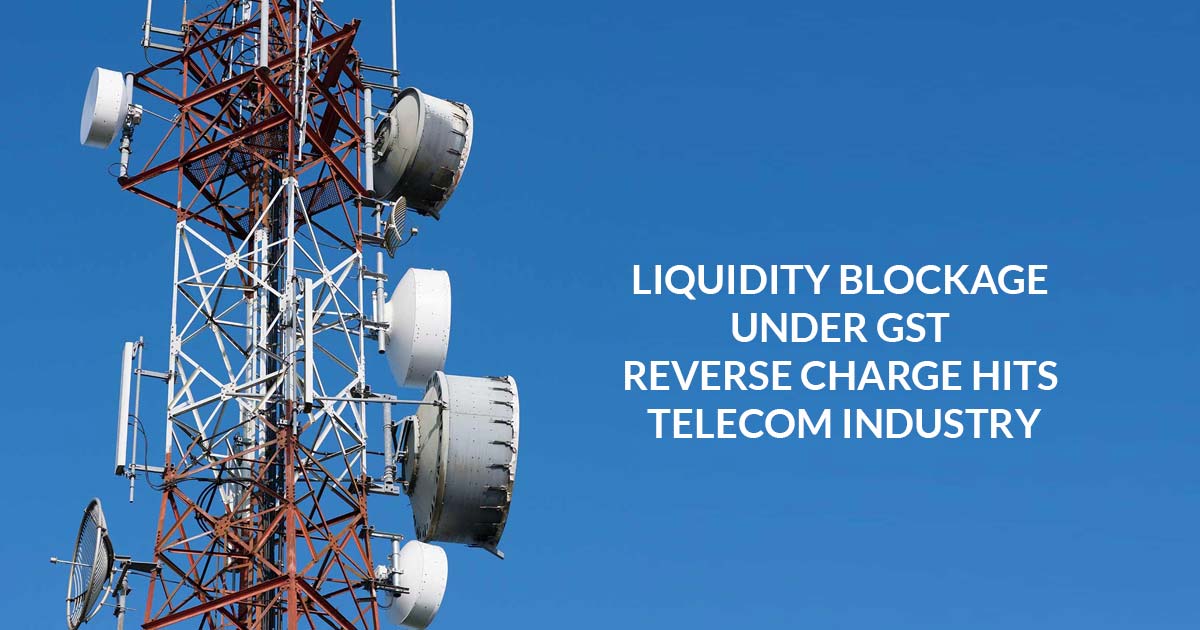The telecom sector has witnessed one of its worst financial years amidst the disrupting tariff wars. The tariff war was sparked by the entry of Jio which offered affordable data plans with free voice and SMS services to its customers. Other service providers were caught wrong-footed by the JIO’s move. This price war and the pressure to stay in the competition series of some of the worse financial quarters for the Telecom sector. In addition to this, Industry leaders also are now expressing concerns over the Rs 30,000 crore capital which is left froze as GST payments under the reverse charge mechanism.
What is Reverse Charge Mechanism in GST?
The reverse charge mechanism under GST mandates registered dealers to pay taxes against goods procured from unregistered businesses/dealers. This has been provisioned to check tax evasion, increase tax revenue as well as increase compliance. Although the reverse charge mechanism was slated to go into effect from July 1, 2017, till October 12, 2017, the Department of Revenue (CBDT and CBEC) postponed it till September 30, 2019. The decision was taken after companies expressed their concerns over the additional compliance burden in implementing the reverse charge provisions.
Kumar Mangalam Birla, Vodafone Idea chairman, has recently raised his concerns over the Rs 30,000 crore locked up due to GST payment. Mr. Birla recently brought the liquidity issue in a meeting with the telecom minister Manoj Sinha. The Union telecom secretary Aruna Sundararajan was also present in the meeting. Other concerns raised by the Vodafone Idea Chairman include the high spectrum payments for radio waves.
Key discussion points of the meeting included.
- High Upfront Payment for Radio Waves.
- Increase in Spectrum Payment Period to 18 years. (Currently, it is 16 Years)
- High Tax rates in the telecom sector.
- Hike in Import Duty of Telecom Equipments.
Reportedly, since the entry of Reliance JIO, the profit margins for rivals have followed a downward curve. This prompted a number of mergers. The primary among these was that of the two major telecom incumbents Vodafone and Idea. But this brought little reprieve as the joint entity posted a consolidated loss of Rs 4,973 crore for September quarter. Following this, the joint entity has already announced a fund infusion of Rs 25,000 crore.
Read Also: Goods and Services Tax Impact on Indian Telecom Industry
Another major player Bharti Airtel has also had similar faith. It has reported consecutive drops in
net profit for the 10th straight quarter. The pricing pressure has forced a drop of nearly 65% in net profits. In July-September last year, Bharti Airtel posted a net profit of Rs 343 crore. This year the net profit came down to Rs 118.8 crore for the same period. Its India operations recorded a net loss of Rs 1646.4 crore during the second quarter of the current fiscal year. This even prompted Moody’s Investors Service to even put Bharti Airtel’s rating for review. A downgrade is a likelihood against low profitability and low liquidity.
